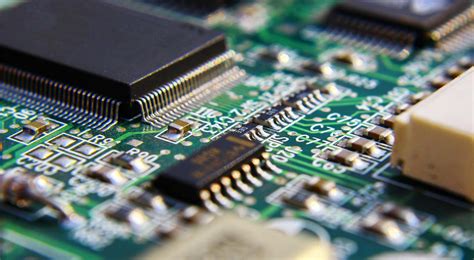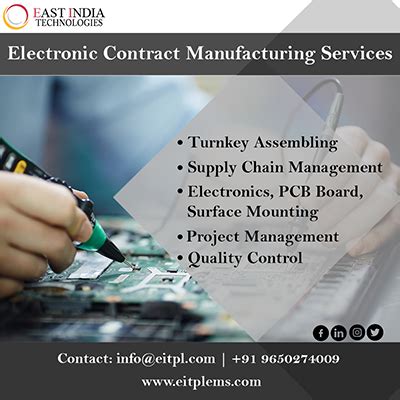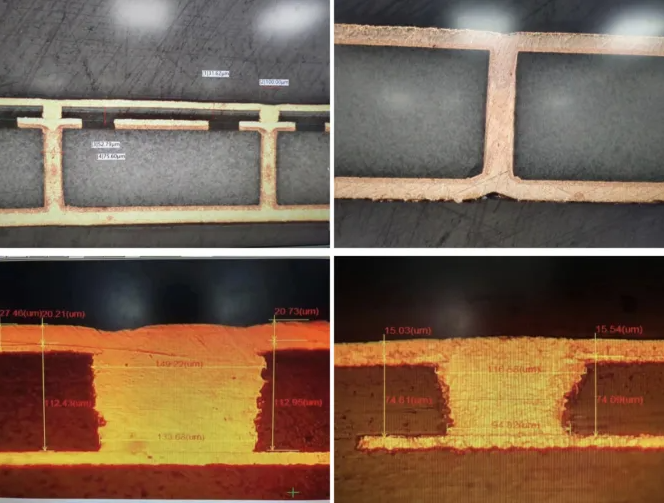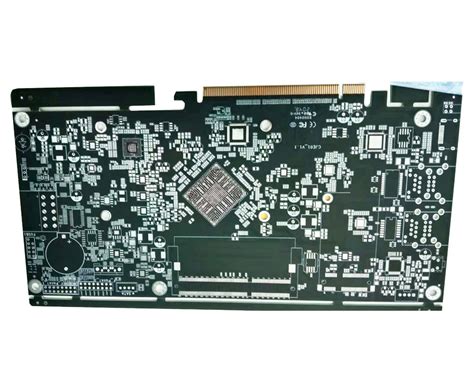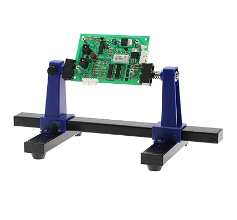Unlocking Innovation: The Art of Assembled Circuit Boards in Modern Technology
Key Takeaways
In examining the role of assembled circuit boards in modern technology, it’s essential to recognize how pcb assembly serves as a foundation for innovation. The complexity of the pcba process involves meticulous attention to detail and precision, ensuring that each component functions seamlessly within electronic devices. As technology advances, the assembly techniques are continually evolving to meet the demands of increased functionality and reduced sizes. Challenges such as signal integrity, thermal management, and miniaturization require engineers to implement innovative solutions throughout the assembly process. Moreover, sustainability is becoming a significant focus in circuit board manufacturing, leading to practices that not only enhance performance but also minimize environmental impact. Understanding these key elements is crucial for professionals in the field, as these advancements dictate the future landscape of technology and electronics development.
The Evolution of Circuit Board Technology: A Historical Perspective
The journey of circuit board technology has been marked by transformative innovations that have redefined the landscape of modern electronics. From the early days of point-to-point wiring, where each component was manually connected, we have advanced to pcba—the era characterized by assembled circuit boards that integrate multiple functionalities into one compact design. The shift towards using printed circuit boards (PCBs) began in the mid-20th century when technology called for increased reliability and efficiency in electrical connections. Initially, these boards were largely rudimentary, featuring simple designs with limited functionalities.
As integration demands grew, manufacturers began innovating in both design and production techniques, leading to the development of more complex multi-layer pcba. These advancements enabled the miniaturization of components without compromising performance, resulting in smaller and more powerful electronic devices. Today, pcb assembly processes utilize cutting-edge techniques such as surface mount technology (SMT) and through-hole technology to create intricate circuit layouts that support higher densities.
Table 1: Comparison of PCB Technologies
| Technology Type | Description | Advantages |
|---|---|---|
| Through-Hole Technology (THT) | Components are inserted through holes | Strong mechanical support; easy to repair |
| Surface Mount Technology (SMT) | Components are soldered directly onto board surfaces | Smaller size; faster assembly |
In this ever-evolving field, we witness rapid advancements that impact not only manufacturing practices but also the performance capabilities of devices across various industries. As we trace the historical evolution from basic designs to sophisticated assemblies, it’s clear that assembled circuit boards have become a pivotal element facilitating innovation in modern technology.
Understanding the Components: Key Elements of Assembled Circuit Boards
Assembled circuit boards, often referred to as PCB assembly or PCBA, are integral to the functionality of modern electronic devices. These boards consist of various key elements that work in unison to ensure optimal performance. At the core, a printed circuit board (PCB) serves as a foundation, providing a physical platform for electronic components. This board is typically crafted from non-conductive materials, layered with conductive pathways that facilitate electrical connections. The components mounted on the PCB include resistors, capacitors, integrated circuits, and connectors which are essential for signal processing and power management.
The precision in pcb assembly techniques significantly influences the overall quality and reliability of the final product. Surface-mount technology (SMT) has emerged as a prevalent method for assembling components on these boards due to its efficiency and ability to accommodate high-density designs. As such, mastering these techniques is crucial for addressing the growing demands of miniaturization in consumer electronics.
Understanding the significance of each element within an assembled circuit board fosters appreciation not only for their individual roles but also for how they contribute collectively to device functionality. The advancements in PCBA technology continue to drive innovation across various sectors, from telecommunications to automotive, illustrating a clear connection between component design and technological enhancement. As we delve deeper into this article, we will explore how these assembled circuit boards not only support existing technologies but also pave new pathways for future developments in electronics.
The Assembly Process: Techniques and Technologies Behind Circuit Board Production
The pcb assembly process is a vital aspect of modern electronics, as it transforms individual components into a functional unit capable of powering devices that shape our everyday lives. This intricate process requires a blend of technology and craftsmanship, with pcba being the common abbreviation for Printed Circuit Board Assembly. One of the key techniques used in pcb assembly is Surface Mount Technology (SMT), where components are placed directly onto the surface of the printed circuit board, allowing for higher density and improved performance. In contrast, through-hole technology still plays an essential role in certain applications, particularly those requiring enhanced structural integrity.
One significant advancement in the assembly process is the use of automated machinery, including pick-and-place systems that dramatically increase production speed while minimizing human error. These machines are equipped with sophisticated software that can identify and position components with remarkable precision. As we delve deeper into these technologies, it becomes evident that despite automation’s prevalence, there remains an essential need for skilled technicians who can oversee quality control and troubleshoot any issues that arise during assembly.
“The balance between automation and human skill is crucial to achieving high-quality pcba.”
Moreover, ongoing innovation in materials science contributes to improved performance characteristics of circuit boards, including enhanced thermal stability and electrical conductivity. This ensures that as devices evolve to meet consumer demands for faster speeds and greater efficiency, the processes backing these creations adapt accordingly. Ultimately, understanding these techniques is vital not only for engineers but also for anyone interested in how our digital world operates on a foundational level.
Challenges in Circuit Board Design: Navigating Complexity and Precision
The design of assembled circuit boards is an intricate process that demands both complexity and precision, presenting numerous challenges for engineers and designers alike. One of the primary hurdles in pcb assembly is the miniaturization of components, as modern electronic devices strive for smaller form factors without compromising functionality. This push for compact design often leads to densely packed layouts, making it crucial to optimize space while maintaining signal integrity and ensuring effective thermal management. Additionally, the integration of various components—such as resistors, capacitors, and integrated circuits—requires impeccable alignment and connection during the pcba process to prevent issues like short circuits or failures. Moreover, evolving technologies necessitate constant updates to design software and tools, compelling professionals to stay abreast of the latest advancements in assembly methodologies. These factors underscore the importance of rigorously validating designs through simulation and testing before proceeding with mass production. As challenges continue to arise from new technologies and material sciences, addressing these complexities becomes pivotal in fostering innovation within the circuit board industry—ensuring that assembled boards not only meet today’s demands but also pave the way for future innovations in electronic devices.
Innovations in Circuit Board Design: Paving the Way for Future Electronics
In recent years, the field of pcba (Printed Circuit Board Assembly) has witnessed remarkable innovations that are setting the stage for future electronic devices. The integration of cutting-edge technologies into pcb assembly processes has enhanced not only the efficiency of manufacturing but also the functionality of electronic components. One notable innovation is the shift towards multi-layered circuit boards, which allow for more complex designs and increased circuit density without enlarging physical dimensions. This ability to pack more functionality into smaller areas is crucial in an age where devices such as smartphones and wearables are becoming more compact yet powerful.
Moreover, advancements in materials science have enabled the use of lighter, more durable substrates that can withstand thermal stress and enhance signal integrity. This means that modern assembled circuit boards are not only better suited for high-performance applications but also contribute to longer device lifespans. Additionally, automation plays a pivotal role in streamlining pcb assembly, reducing human error, and increasing production rates. Techniques like selective soldering and automated optical inspection are now commonplace, ensuring that each board meets stringent quality standards.
As design tools continue to evolve, engineers are now able to simulate and test their designs in increasingly sophisticated environments before physical prototypes are created. This not only accelerates the development cycle but also opens new avenues for innovation in electronics design. The incorporation of Internet of Things (IoT) technologies into assembled circuit boards allows devices to communicate seamlessly, further emphasizing the essential role these components play in our interconnected world.
In conclusion, as we move forward, it is evident that innovations within pcba will continue to drive forward-thinking designs that will shape tomorrow’s electronics, making them more efficient, reliable, and capable than ever before.
The Impact of Assembled Circuit Boards on Modern Devices
The significance of assembled circuit boards in modern electronic devices cannot be overstated. These intricate assemblies, often referred to by the abbreviation PCBA (printed circuit board assembly), serve as the core foundation for a multitude of high-performance technologies we rely on daily. With a focus on pcb assembly, the process involves not just the physical arrangement of electronic components but also intricate designs that enhance connectivity and functionality. Each pcba is meticulously crafted to fit specific requirements, thus ensuring that devices operate reliably and efficiently. For instance, in smartphones, these boards are optimized to provide superior processing speeds and battery efficiency while maintaining a compact form factor, which is crucial for user convenience.
Moreover, the impact of assembled circuit boards extends beyond mere functionality; they significantly influence the overall user experience and device performance. Various industries, including telecommunications, automotive, and healthcare, depend heavily on advanced pcb assembly techniques to drive innovation in their products. Integrating new technologies and materials has led to a substantial reduction in size and weight while enhancing performance capabilities. This evolution highlights the ongoing advancements in assembly processes that challenge traditional manufacturing practices, pushing boundaries toward creating even more integrated and sophisticated devices.
As technology continues to evolve, so too will the role of assembled circuit boards in shaping the devices we use every day. Their importance as both a technical component and an enabler of innovation ensures that they will remain at the forefront of electronic advancement for years to come.
Sustainability in Circuit Board Manufacturing: Practices and Innovations
In the realm of pcb assembly and pcba, the quest for sustainability has become a critical focus for manufacturers aiming to reduce environmental impacts. Emerging practices in circuit board manufacturing emphasize the use of eco-friendly materials, energy-efficient processes, and innovative recycling systems. For example, companies are increasingly adopting lead-free solder alternatives, which not only meet regulatory requirements but also mitigate health risks associated with traditional materials. Furthermore, advancements in design for environment (DfE) principles are ushering in a new era where circuit boards are designed with end-of-life considerations in mind. This shift not only enhances the recyclability of these components but also contributes positively to resource conservation.
Innovations like reusable masks during the pcba process are revolutionizing how circuit boards are assembled, allowing manufacturers to minimize waste significantly. Additionally, digital tools and technologies enable real-time monitoring of resource consumption during production, promoting efficiency and promptly identifying areas for improvement. As environmental regulations tighten globally, manufacturers are motivated to implement cleaner production technologies that not only comply with regulations but also resonate with environmentally conscious consumers. Through such measures, the sustainability initiatives within circuit board manufacturing are setting a benchmark for the broader electronics industry, demonstrating that environmental responsibility can align with technological advancement while still delivering high-performing electronic devices.
Future Trends in Assembled Circuit Boards: What’s on the Horizon?
As technology progresses, the future of assembled circuit boards is poised for transformative advancements. One significant trend is the increased adoption of flexible printed circuit boards (FPCBs), which allow for more versatile design options in electronics. These pcba solutions enable manufacturers to create lightweight, compact devices that can bend or twist, making them ideal for wearables and compact gadgets. Additionally, we anticipate a rise in automated assembly techniques, enhancing precision and reducing production time. The integration of artificial intelligence and machine learning into the pcb assembly process will facilitate real-time monitoring and adjustments, leading to higher quality assurance. Sustainability is also at the forefront of development; biodegradable materials and eco-friendly manufacturing processes are increasingly being incorporated in response to environmental concerns. Furthermore, as the Internet of Things (IoT) continues to expand, smart circuit board designs are expected to emerge, enabling seamless connectivity among an array of devices. Overall, these trends indicate a bright future for assembled circuit boards, where innovation drives new possibilities across all sectors of technology.
Conclusion
As we conclude our exploration of assembled circuit boards and their critical role in modern technology, it’s essential to recognize the ongoing significance of pcb assembly processes in driving innovation. The journey of pcba has transformed how electronic devices are designed, produced, and utilized across various industries. The complexity of designs has only increased, necessitating both technical prowess and creativity to ensure optimal functionality. Moreover, the advancements in assembly techniques not only address traditional challenges but also pave the way for more sustainable practices within the electronics sector. As technology evolves, so does the potential for assembled circuit boards to support even more complex applications while enhancing performance and reliability. The future of electronic devices will undoubtedly continue to be shaped by these remarkable components, reflecting both the art and science involved in their creation. Thus, as we look forward to emerging trends and innovations, it becomes clear that the landscape of modern electronics is intricately linked to the mastery of pcb assembly techniques that define our technological progress.
FAQs
When it comes to pcb assembly, many individuals may have questions regarding its intricacies and functions within modern electronics. Firstly, what exactly is pcba? Simply put, it refers to a printed circuit board assembly, where various electronic components are mounted onto a circuit board to create a fully functional electronic device. This process involves multiple steps, including designing the layout of the board, sourcing quality components, and employing advanced soldering techniques to ensure durability and performance.
Another common question revolves around the challenges faced during the pcb assembly process. As technology advances, the demand for smaller and more complex devices increases, making precision in design crucial. Manufacturers must navigate issues such as miniaturization, signal integrity, and thermal management while also maintaining cost-effectiveness during production.
Furthermore, many readers may wonder how these technological advancements impact pcba production. With ongoing innovations in materials and assembly techniques, such as surface mount technology (SMT) and automated processes, the industry is witnessing improved efficiency and reliability in circuit board assemblies.
Lastly, sustainability is becoming an essential aspect of manufacturing practices. As environmental concerns grow, the shift towards eco-friendly materials and processes is becoming more prevalent in pcb assembly, emphasizing the significance of responsible sourcing and waste management.
For those eager to learn more about pcb assembly or explore further insights into this vital component of modern technology, please click here.

